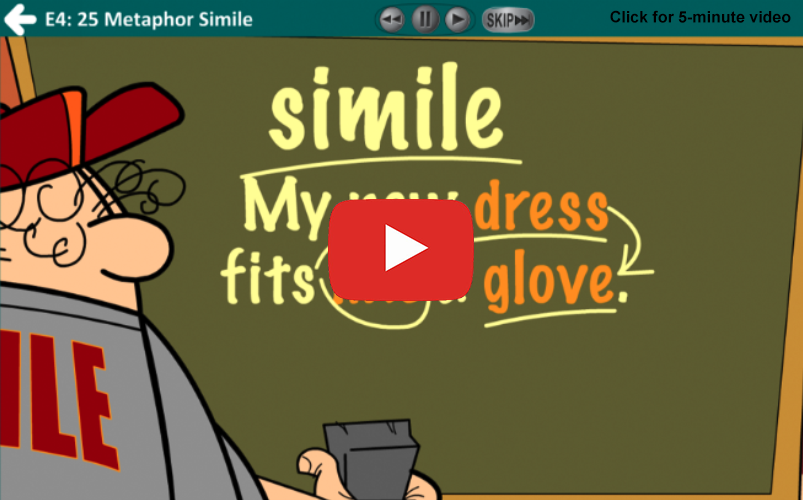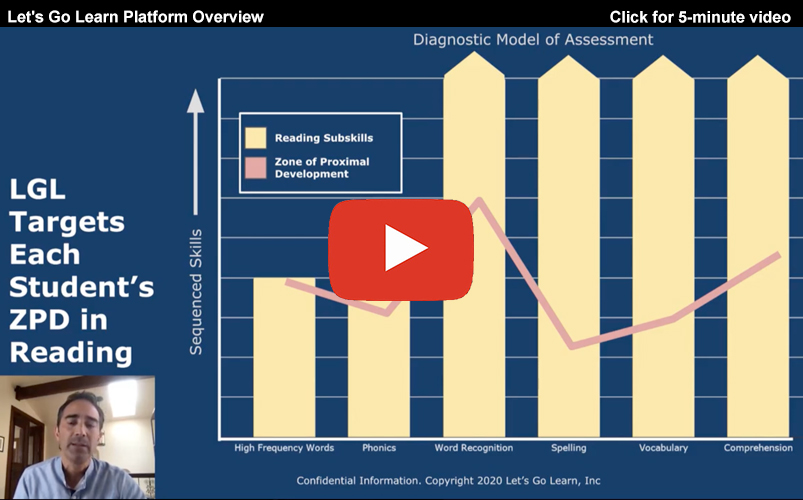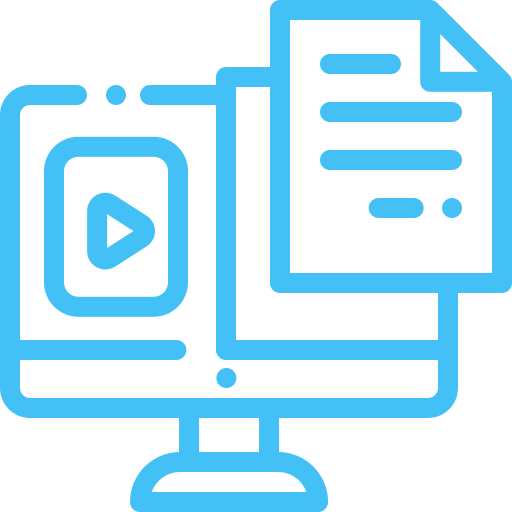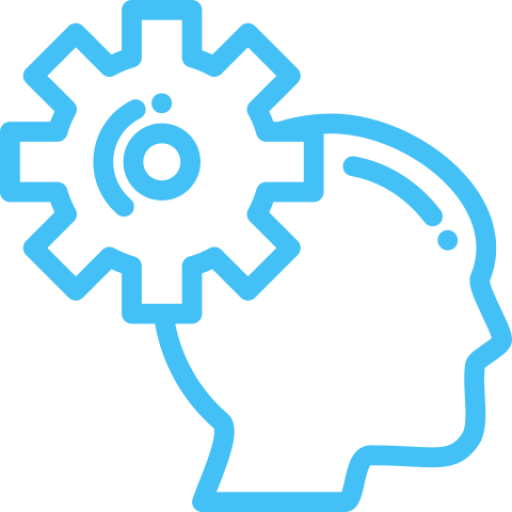Language Arts &
Reading Intervention
Digital tools to support K-12 teachers
and struggling readers.

We support ELA/reading initiatives for a phased-in approach to literacy reform.
Question 1: Why do district ELA/reading programs fail when they offer only core curricula and exclusively rely on grade-level benchmark tests?
Answer: Equality is their goal, rather than equity. Students continue to fall behind. Districts see stagnant ELA/reading proficiency scores year after year. They fail to help the majority of students thrive in ELA/reading.
Case Study: See how Jersey City public schools created significant gains for diverse students. >


Question 2: How does committing to a personalized ELA/reading model or framework lead to equity?
Answer: By choosing a personalized learning model for ELA/reading, Let’s Go Learn breaks the cycle of fixed pacing guides and narrowly taught ELA/reading skills and strategies. We simplify personalized implementation to ease the transition for each teacher.
We begin with a precise analysis of each student.
- Diagnosis of gaps in reading skills: high-frequency words, phonemic awareness, phonics, fluency, spelling, vocabulary development, and reading comprehension
- Clear data and narratives to support IEP writing and goal setting
- Reporting to support individual, small-group, or whole-class instruction
- Descriptive and actionable reports to share with parents and students
- Automatic progress monitoring via weekly, monthly, or quarterly pre-made formative tests
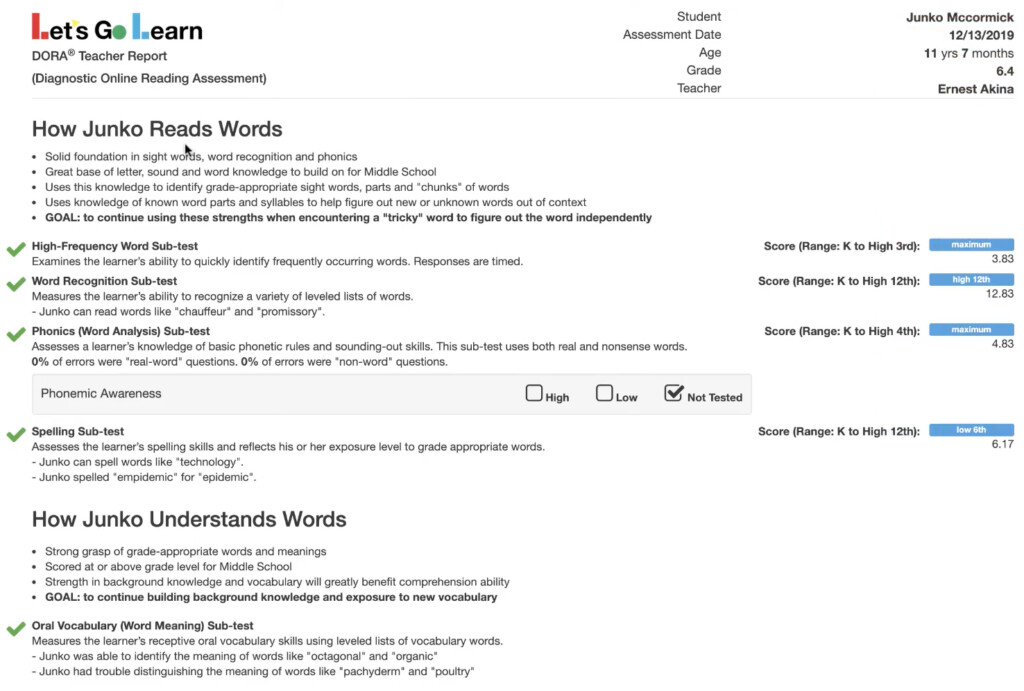
Then our system assigns a personalized learning path
for each student.
- Explicit instruction is given in each lesson.
- Animations, songs, and graphics help all students access the lessons.
- Gamification provides practice and ensures student engagement.
- Instruction levels range from K to 9th grade for all students, as appropriate.
- Students get what they need–not what a grade-level placement test assumes they need!
Our reports make student data accessible to teachers, students, parents, and administrators.
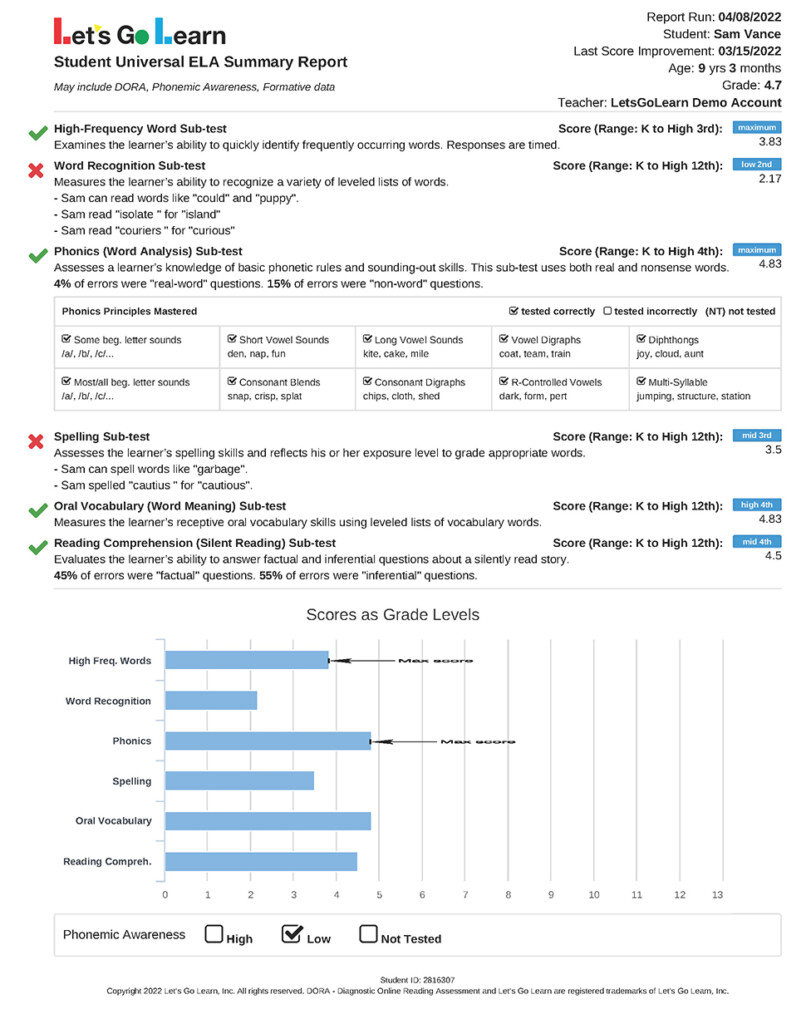
- Teachers can print reports to share with parents.
- Data can be used in IEP meetings.
- Data can be exported for special education compliance.
- Administrators can compare school by school performance.
- Principals can improve their instructional leadership.
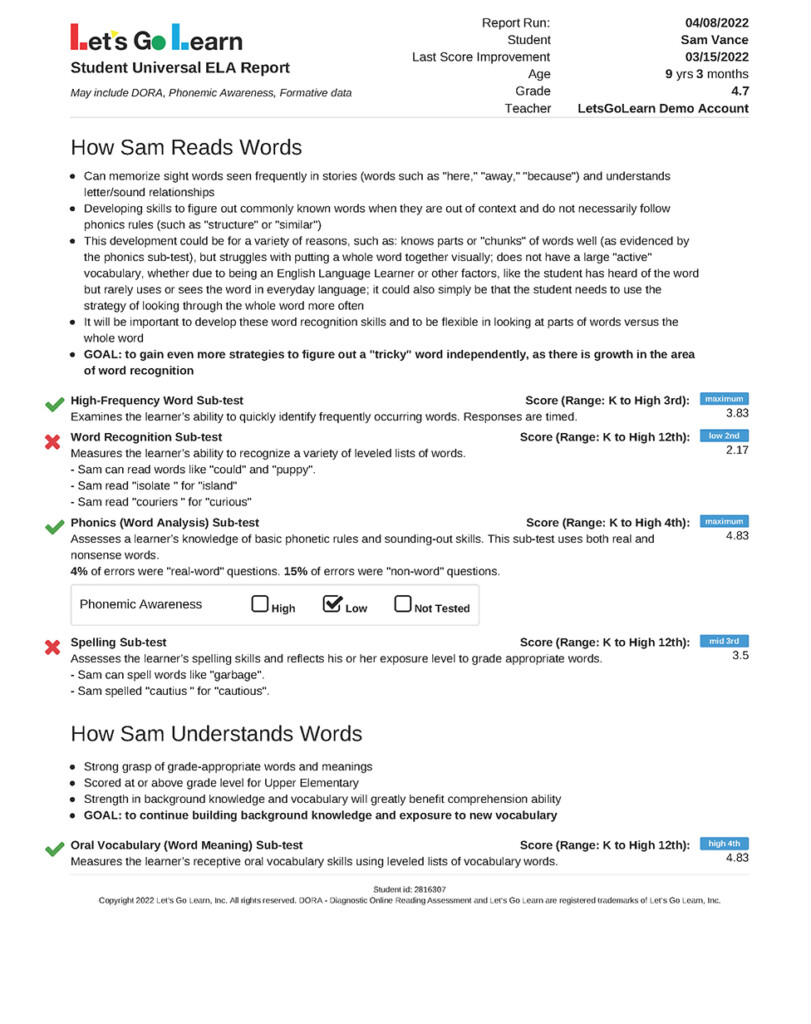
Next, monitor student progress with our
automated formative assessments.

Used for progress monitoring required for special education or district formative testing initiatives:
- Pre-made short skills/concepts quizzes assignable with a click of a button
- Pre-made sub-test adaptive tests assignable with a click of a button
- All data vertically scaled, rolling up to a single ELA/reading score card for each student
- Turnkey progress monitoring system for teachers
- No more teacher-made test creation required
- Progress monitoring that is legally compliant for students with IEPs
Our system continuously adjusts learning paths, using ongoing formative assessment data.
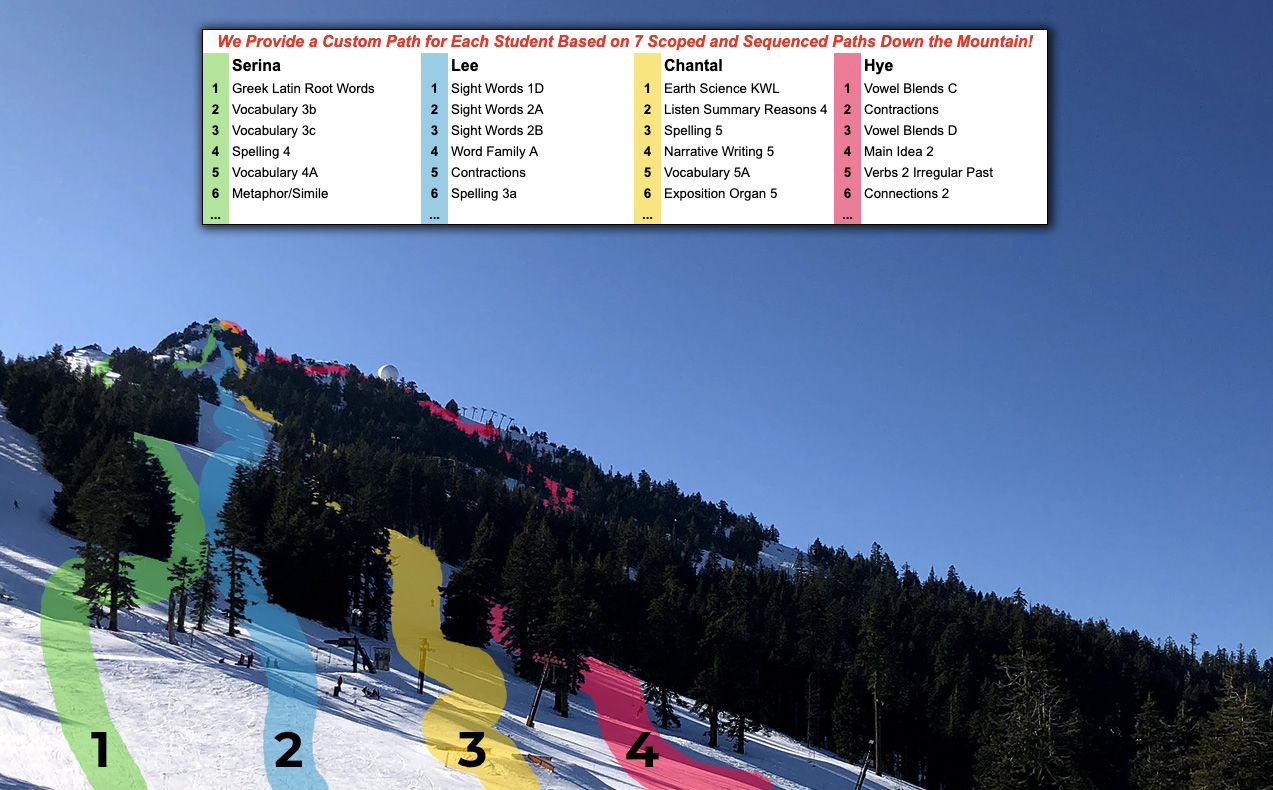
Use our flexible & fully automated system
for all your ELA/reading initiatives.
| Personalized K-8 ELA | Secondary Intervention | 9th-grade Placement |
|---|---|---|
|
|
|
| Family Engagement | RTI/MTSS Support | Automatic Summer School Intervention |
|---|---|---|
|
|
|




